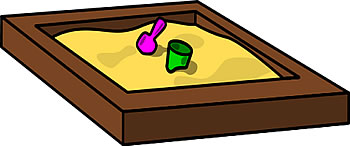 Recently, questions have been raised about health effects of exposure to playground sand. Because kids like to use sandboxes, some parents have asked us about the health effects of playing in sand.
Recently, questions have been raised about health effects of exposure to playground sand. Because kids like to use sandboxes, some parents have asked us about the health effects of playing in sand.
The short answer is, kids probably won’t experience any harm from playing in playground sand. The risk is tiny, for several reasons.
- Children play with sand outdoors, not indoors. Outdoor playgrounds are fully ventilated by Mother Nature’s fresh air, winds, and breezes. Health studies about exposure to sand have focused on closed commercial environments, like cement plants and ceramics factories.
- Children only play with sand for short periods of time. The subjects of health studies that found a health risk from sand exposure inhaled it for decades, for the length of a work shift (usually 8 hours). But a child usually stays on a playground for no more than an hour and has lots of distraction from other play equipment.
- Grains of sand are much too large to be drawn into the lungs. To pose a health risk, a sand particle has to measure 1/24,000 of an inch. But grains of playground sand are much bigger, measuring about 212 micrometers.
- Have you ever seen any health warning signs at the beach about playing in the sand? No, because those signs not there. You probably spent weeks and weeks at the beach in your childhood, but the sand there never hurt you. Quality playground sand is very similar to beach sand (assuming that you don’t buy cheap, dusty sand).
If you’re still concerned about exposure to playground sand, you can check with the playground operator and make sure that they buy quality playground sand. Cheap sand is more likely to have dust in it, and that’s not good for kids. Look for a “washed” sand, which means that it has been screened and filtered.
You can also wash kids’ hands after they leave the playground.
